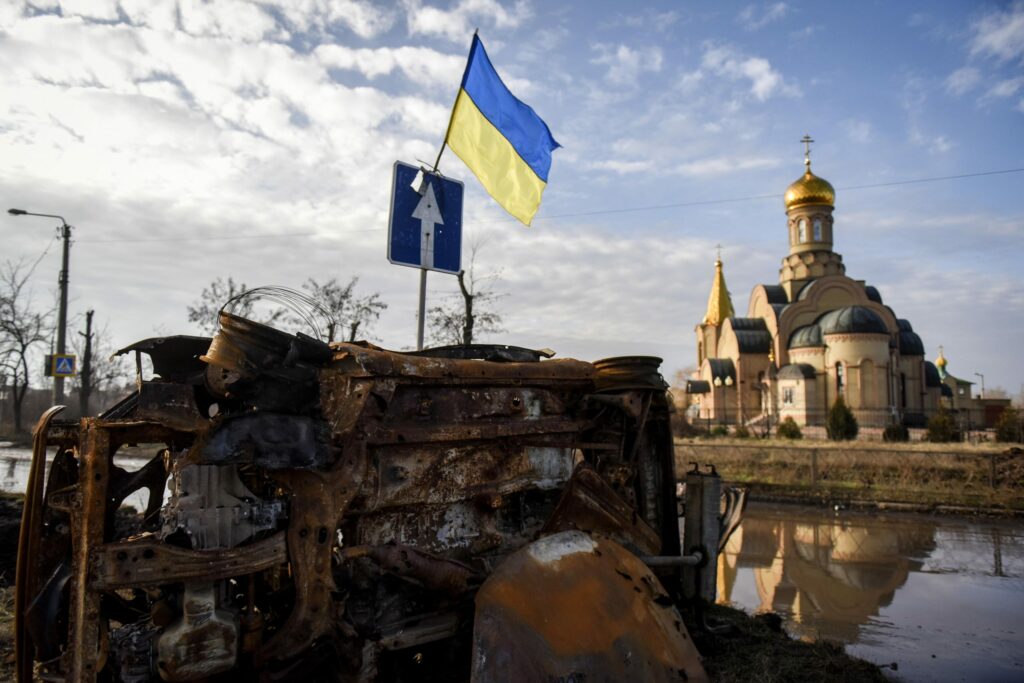That an agreement to stop the fighting had already emerged 1-2 months after the Russian attack is no mystery – the head of the Ukrainian delegation Arakhamia also spoke about it in November 2023 – but it was not clear to what point it had advanced the negotiation nor whether it actually reflected Moscow’s willingness to make relatively reasonable compromises.
The Russian-Ukrainian agreement of 2022
The text of the latest version of the draft agreement, dated 15 April 2022, published by Die Welt on 25 April, responds positively to this question: the Russian forces, who had already evacuated the occupied areas in the North, would have withdrawn from the others occupied regions outside Donbas. The extent of the withdrawal from the provinces of Donetsk and Luhansk (the Donbas, in fact) was instead postponed to a final round of direct negotiations between Putin and Zelensky.
The essential core of the agreement was the permanent neutrality of Ukraine (Moscow’s main objective at that stage), with the commitment not to ask for admission to NATO and not to welcome foreign bases or troops. Instead, there is a green light for joining the EU, in contrast with the pressure exerted in 2013 on Yanukovych, the cause of the Maidan uprising.
As for the other original objectives of the invasion, “demilitarization” (not complete) was still the subject of negotiations, with wide divergences on the numerical ceilings of troops, armored vehicles and missile range; “denazification” no longer meant the installation of a puppet government, but only the abrogation of nationalistic laws relating to historical memory; and even in this regard Kyiv had not yet given in.
In exchange for neutrality and partial disarmament, Ukraine would have obtained security guarantees from the P5 and some other countries (which were not consulted).
A very recent article published by Foreign Affairs, based on numerous interviews with protagonists of that diplomatic affair, confirms that there were “negotiations that could have put an end to the war” and that the agreement was close to finalization, not a simple working hypothesis. The negotiations began shortly after the failure of the siege of Kyiv in early March, in Belarus, with the mediation of Lukashenko, and then continued in Turkey. An outline of the agreement (Key Provisions of a Treaty on Ukrainian Neutrality and Security Guarantees) was announced in Istanbul with a statement following the meeting on 29 March. Finally, various versions of the text were exchanged – the last one on April 15 – and it was expected that the two presidents would be able to resolve the last controversial points and sign at the end of April or shortly after. The authors define Russia’s willingness to compromise solutions as surprising, probably due to the military failures that would have led Putin to cut losses, to abandon the poorly planned adventure to limit the damage.
The role of Boris Johnson and Zelensky’s decision
They do not deny that Zelensky’s decision to scuttle the plan was influenced by the negative message brought by Boris Johnson, who visited Kyiv on 9 April: do not trust agreements signed by Putin, keep fighting, we will provide you with the necessary aid. But Putin’s claim that the Anglo-Americans forced the Ukrainian president to back down, so as to wear down and weaken Russia, would be simplistic. In fact, negotiations continued for at least a week after that visit. Zelensky would have hardened after the discovery of the atrocities committed by the invaders in Bucha and Irpin, and would have been encouraged by Russian failures and Western promises of aid to aim for a victory.
The fact remains that the British Prime Minister and, albeit in a less drastic way, the Americans denied their support for the agreement (It is a non-starter) because it included a commitment by them and the other guarantors to militarily assist the Ukraine if attacked. Therefore an absolute guarantee, unlike that granted with the Budapest Memorandum of 1994, and more binding even than Article 5 of the NATO Treaty. However, a knot remained to be resolved which (perhaps deliberately) could derail the entire project: Russia claimed the right of veto over any collective or individual action in defense of Ukraine.
What future for Ukraine?
The failure of that agreement was therefore due to a significant extent, although not exclusively, to the Anglo-American refusal to commit to facing Russia militarily in the event of a new aggression. Which is more than understandable; but then how protected can Ukraine feel under the NATO umbrella if admitted?
Today the situation has changed a lot compared to two years ago, with the Russian forces advancing and the Ukrainian ones exhausted, so we can expect a much tougher Russian negotiating position than then. It is therefore interesting that on 11 April Lukashenko, in Putin’s presence, spoke out in favor of negotiations starting from that agreement, which he defined as reasonable.
